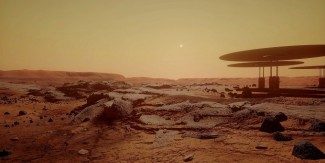At NVIDIA’s GTC event earlier this month, NASA gave a talk which revealed just how important virtual reality has become to the organisation’s Astronaut training program. This talk includes video demonstrations of NASA’s advanced experiments designed to give workers in space realistic training simulations to prepare them for the difficulties of zero gravity working and space walks.
NASA have of course been involved in virtual reality for decades now. Some of their formative experiments in the field of immersive technology are well documented, and you may even have seen at least one of their most famous early head mounted displays – one of the earliest head mounted displays ever built.
Now, NASA is leveraging the rapid advancement in the consumer virtual reality space to tackle the difficulties of preparing people for the difficulties of working in space. In a talk given to attendees of NVIDIA’s GTC conference this month, Matthew Noyes, Aerospace Technologist and Francisco Delgado, Aerospace Technologist / Project Manager from NASA demonstrated their use of off the shelf game engine technology, headsets (primarily the Valve engineered HTC Vive) and motion controllers to build an accurate simulation of the International Space Station.

NASA are using the term ‘Hybrid Reality’ to refer to physical spaces modeled around real environments (the ISS) and then tied to physical environments. In other worlds, once the VR portion of the simulation is built, a physical environment including real features is used as a stage to fuse virtual and physical elements, enhancing realism and immersion. If a ledge exists in the VR simulation, the user should be able to feel that in real life. NASA are using Valve’s extremely accurate room-scale technology to achieve this, and in the video you can see a user demonstrating virtual and physical collisions with a motion controller.
Additionally, the talk described NASA’s development of a re-configurable CAVE (Cave Automatic Virtual Environment) comprising an enormous video wall that allows NASA to offer simulations for scenarios which at present don’t allow the use of a VR headset – when trainees don a space suit for example. Interestingly, VR was still used to create this more traditional display, with a VR simulation of the video wall being used to test the simulation before the system was physically built.
This is just a brief summary of what NASA shared at GTC 2016, please check out the video at the top of the page for much more insight into NASA’s work in VR.
Note: The video was shot handheld, we’ve stabilised the original as much as possible.






